Updated February 2018
Looking for resources for teaching sociology?
Below are snippets of some of the sociology teaching tools you will find on this blog organized by topic.
CLICK ON THE TITLE TO OPEN THE FULL POST IN A NEW WINDOW
RACE AND ETHNICITY: Teaching an introduction to sociology course? Teaching a race and ethnicity course?
POLICE KILLING OF BLACKS: Data for 2015, 2016, 2017 Download charts that examine the race, ethnicity, age and other characteristics of people killed by police in 2015, 2016, and 2017.
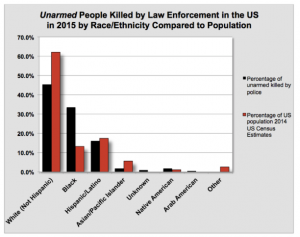
“BUT BLACKS COMMIT MORE CRIMES”: Scholars discuss conservative logic Since 2014 there has been renewed interest, concern, and protest regarding the police use of deadly force against unarmed Blacks. Various conservative commentators and publications, as well as comments on other posts to this blog, have implied that the reason so many Blacks are killed by police is that Blacks are more likely to be involved in violent crime. For example, in an article in the National Review, David French writes, “Moreover, racial disparities in the use of force are largely explained by racial disparities in criminality. Different American demographics commit crimes at different rates, so it stands to reason that those who commit more crimes will confront the police more often.” This post is the transcript of a conversation regarding this issue I had with three scholars, all of whom have studied the interaction of police and the African American community.
IMPLICIT RACIAL BIAS: where do we learn whom we should perceive negatively? The problem with overt racism (other than its bigoted, undemocratic, violent and discriminatory nature) is that whites (myself included as a white heterosexual male) too often think that as long as we don’t fly the Confederate flag, use the n-word, or show up to the white supremacist rally that, well…we aren’t racist. However, researchers at Harvard and the Ohio State University among others show that whites, even today, continue to maintain a negative implicit bias against non-whites. This negative bias is subconscious and is activated in split-second decisions we make…judgments about others.
RACISM AND THE POLICE: The Shooting of Michael Brown in Ferguson. Systematic racism has been made evident again in the shooting of an unarmed young Black man, Michael Brown, by a police officer in Ferguson, Missouri. Pulling stories directly from recent news headlines is one way to get students’ attention and demonstrate the abundant relevance of the sociological perspective. The New York Times has a timeline of the events that serves as a useful starting point (from the mainstream media) to share the events with students that may have not kept up with the story.
THE SOCIAL CONSTRUCTION OF RACE: BLURRY DISTINCTIONS AND CHANGING CATEGORIES. The social construction of race is made evident when we see how the boundaries and distinctions that supposedly distinguish one race from another are unclear. Additionally, this is made clear when “official” categories, that seem fixed, are altered. The first of two tools that I have found to clearly demonstrate the social construction of race to students is a series of photographs from National Geographic.
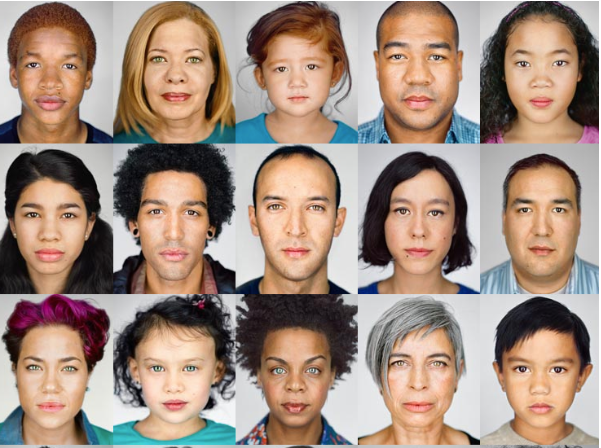
MASS INCARCERATION: DATA, TRENDS, AND COMPARISON. Staggering rates of mass incarceration are impacting minority communities disproportionally and it is the consequence of changes in policy and the economy- changes in the social context – rather than changes in individual behavior. “An African American male born in 1975 and who didn’t finish high school has a nearly 70 percent chance of serving jail time by his mid-thirties.” That should be enough to get everyone’s attention. The following draws mostly on resources from the Hamilton Project of the Brookings Institute (brought to my attention by Ezra Klein’s piece on Vox), and Bruce Western‘s 2006 book, Punishment and Inequality in America (Russell Sage Foundation).
RACIAL PROFILING: WHAT CAN BLACK PEOPLE AFFORD? Racial profiling involves making judgments about an individual based on the erroneous assumptions about the qualities of an entire racial group. What assumptions are made in society today based on the race of another person?
THE WAR ON DRUGS: RACE MATTERS The war on drugs impacts people differently based on race. The rate of drug use among populations does not correspond to the rate of incarceration for drug use. Many students often assume that the higher rate of African American males in US prisons is simply a reflection of higher rates of crime. After all, it is called the justice system. An extensive report by the ACLU provides a short video, graphic presentations of the data, and a pdf of the full report on marijuana use and arrest rates among blacks and whites.
RACE IN AMERICA: HISTORICAL CONTEXT Do we have enough historical context when we talk about race in America? This past week there was a celebration of the 50thanniversary of the March on Washington for Jobs and Freedom. This larger historical event included Dr. Martin Luther King Jr.’s “I have a dream…” speech. First, I think we are too quick as a society to want to talk thoughtfully about something as it is happening (e.g. multiple 24-hour cable news networks, Twitter, etc). With our students, I think we need to encourage the idea that critical thinking takes time and rigorous reflection. That doesn’t mean we can’t discuss events as they happen, but too often, in the public sphere, that has become the extent of it. As academic researchers, we know it can take years to formulate, collect, analyze, and publish rigorous research. Back to the issue of race in the US…
. . .
THE SOCIOLOGICAL IMAGINATION: Teaching an introduction to sociology course? This is the classic topic that begins most semesters. See numerous resources below.
SOCIOLOGICAL IMAGINATION: COLLEGE ENROLLMENT IN CONTEXT. An understanding of the sociological imagination can be difficult in our very individually focused society. As a topic, the sociological imagination is usually the first or second class of every introduction to sociology course. Teaching topics by relating them to students’ immediate context (especially early in the semester) is one way to help them
see how the sociological imagination works.
THE SOCIOLOGICAL IMAGINATION: AWAKENING IT BY VIEWING OTHER CULTURES. I have found that teaching students to understand and utilize the sociological imagination – the ability to see the relationship between one’s individual life and the effects of larger social forces – is aided by exposing them to different social structures and cultures. While study-abroad programs are ideal for experiencing this first hand, we can also bring other cultures into the classroom through film, photographs, and students’ existing experiences.
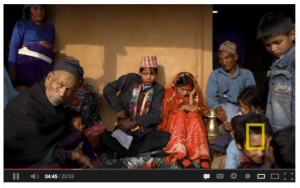
NACIREMA: UPDATING A CLASSIC TO SEE YOUR OWN CULTURE AS AN OUTSIDER By now, many students have read the original Nacirema in high school. Here is a more modern version written by a student.
THE SUPER BOWL: A sociological view Break out the guacamole, it is time for Super Bowl sociology! What does the Super Bowl mean in our society? It is far from simply a sporting event or even just the final game of a season. The Super Bowl is a sociological phenomenon. It is a great teachable moment using an event that everyone has at least heard of and many of our students will be watching… or at least at a social event where the game is playing on the television. While many of our students will be highly engaged in the event, few may have thought about it from a sociological perspective. Below are some interesting resources from sociology and other disciplines that can help reveal the sociology in the Super Bowl.
SOCIAL CONSTRUCTION OF THE BODY: The nipple Examples of the social construction of the body are prevalent in the media’s objectification of the female body in particular. See the famous documentary Killing US Softly 4 for numerous patterns in the media. The biological body has purposes driven by genetics and “human nature”, but the meanings we as a society apply to the body are not fixed, “natural”, or static. They are socially constructed.
VIOLATING SOCIAL NORMS: cellphones. Often we are not consciously aware of the prevailing social norms that dominate our culture until they are violated. Many faculty demonstrate the power of social norms to their students with an assignment for them to engage in norm violations – intentionally altering their behavior outside of the classroom to see how others react and how it disrupts social interaction. The risk of this assignment is that students take the norm violation too far, harming others or getting in trouble (try explaining to the Dean that you actually assigned them to do that). Therefore, rules and guidelines must be made clear if this is assigned.
NORM VIOLATION: PETS OR FOOD? Why don’t we eat dogs? That question will always get student’s attention.  The definitions of “appropriate” food are socially constructed and it is often only through norm violations that we see how much stronger the sociological forces are compared to actual biological limitations of the calories available to us.
The definitions of “appropriate” food are socially constructed and it is often only through norm violations that we see how much stronger the sociological forces are compared to actual biological limitations of the calories available to us.
. . .
THEORY
MAKING CLASSIC SOCIAL THEORY RELEVANT: MAX WEBER How do we best teach students in introductory courses the classic social theory of Max Weber (and others) in a way that makes it consequential and relevant? This is an important question because it often makes sense to teach Marx, Durkheim, and Weber early in the semester, but they can be complex and the issues may seem distant and well…boring. This semester I have tried to pair short pieces of original scholarship by these thinkers with a contemporary reading that shows a clear parallel.
. . .
ENVIRONMENTAL SOCIOLOGY AND CLIMATE CHANGE
CLIMATE JUSTICE: tolls for teachings. Here you will find a collection of different tools to teach about viewing climate change through a justice lens. These resources include a short TEDx talk on climate justice.
IS THE ENVIRONMENTAL MOVEMENT TOO WHITE AND MALE?: Original survey data and analysis from the People’s Climate March. This post explores the issue of mainstream environmental movements being too white and often too male. Here I compile some data from Dorcetta Taylor about leadership in environmental organizations, as well as survey data I collected at the 2014 People’s Climate March in New York City.
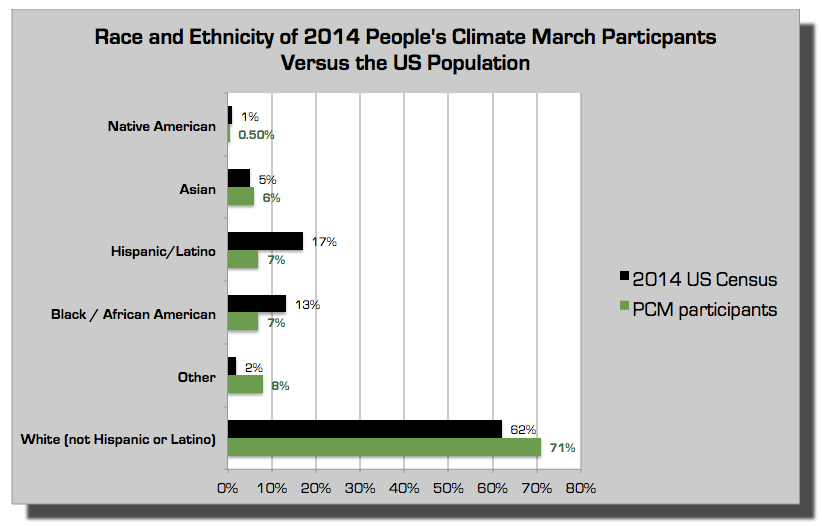
CLIMATE JUSTICE: An analogy Many people and students are unfamiliar with the context that has generated calls from nations and social movements for “climate justice.” Below is an analogy that makes the global context behind climate justice more evident at the individual level. I have found that this helps students from the U.S. get a better idea of how people and nations of the Global South might feel about the global negotiations to address the issue. While this is very introductory, you may find it a good place to start for those that have not been previously exposed to the topic. I use it as a primer for a more detailed discussion. The analogy is able to get students feeling the emotions of injustice and subsequently, they are more empathetic to more abstract global realities.
THE TRUST GAP: Few in African civil society think the US will deliver on climate change Even before the election of Donald Trump to the presidency of the US, few members of civil society throughout Africa expressed a great deal of trust that the United States would fulfill its commitments regarding climate change. Data from a survey earlier this year (2016) of members of the Pan African Climate Justice Alliance (PACJA) show that African organizations addressing climate change have little trust in the rest of the world regarding the reduction of emissions to maintain average global temperatures below 1.5 degrees Celsius – with the US receiving the lowest level of trust.
CLIMATE CHANGE AND CLIMATE JUSTICE: WHO’S RESPONSIBLE? TEACHING ABOUT CLIMATE CHANGE 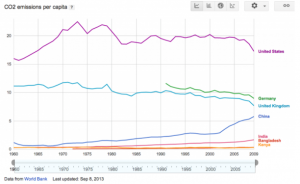 IN SOCIOLOGY COURSES IS VITAL and should arguably include a focus on CLIMATE JUSTICE. Teaching students about climate change should not be limited to courses in the natural sciences for many reasons.
IN SOCIOLOGY COURSES IS VITAL and should arguably include a focus on CLIMATE JUSTICE. Teaching students about climate change should not be limited to courses in the natural sciences for many reasons.
ECOLOGICAL FOOTPRINTS: How many planets for our lifestyle? As the consequences of highly consumptive capitalism continue to cause problems around the world, teaching about the impacts of our consumption is an increasing necessity in every classroom. One of the best ways I have found to demonstrate the structure/agency dynamic to students is to have them calculate their ecological footprint.
. . .
GLOBALIZATION: Teaching introduction to sociology or globalization or economic sociology?
GLOBALIZATION: MEASURING THE GLOBAL ECONOMY. When most people think about “globalization” they likely think about the global economy. In the more recent era, globalization was pushed into public debate in the 1990s when NAFTA (the North American Free Trade Agreement) was being debated and the WTO, World Bank and IMF were making significant strides in implementing the neoliberal economic model on a global scale. In a previous post I wrote about global commodity chains, here I will explore some of the ways that the global economy is measured and tracked.
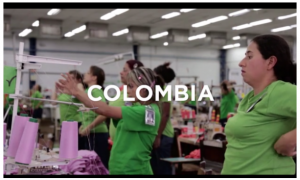 GLOBALIZATION OF COMMODITY CHAINS: WHERE DID MY T-SHIRT COME FROM? The globalization of commodity chains is something that students have a general idea about, but I find it challenging to remove the abstract nature of the convoluted path that materials take before they end up in a consumer’s hands. Sure, “everything is made in China” blah blah blah, but the story of the global economy is MUCH more complex and filled with people occupying different social contexts. Planet Money has come to the rescue with an amazing new story tracing every step of something as simple as a t-shirt.
GLOBALIZATION OF COMMODITY CHAINS: WHERE DID MY T-SHIRT COME FROM? The globalization of commodity chains is something that students have a general idea about, but I find it challenging to remove the abstract nature of the convoluted path that materials take before they end up in a consumer’s hands. Sure, “everything is made in China” blah blah blah, but the story of the global economy is MUCH more complex and filled with people occupying different social contexts. Planet Money has come to the rescue with an amazing new story tracing every step of something as simple as a t-shirt.
. . .
INEQUALITY: Basic tools for teaching sociology using some visual graphics and dynamic figures.
A PATH TO MOBILITY? How universities maintain the class structure Going to college is sold as the primary pathway to upward economic mobility but is that true? In today’s world, a college degree is widely understood as the ticket to success, but do universities actually contribute to the maintenance of class structures…reproducing an increasingly stratified system?
MINIMUM WAGE: DO WE UNDERSTAND THAT REALITY? What does it mean to live on minimum wage in the US? For any student readers of this blog, you are likely very familiar with what it means to earn minimum wage, but it is also likely that fewer of you rely completely on that income for all of your living needs. How do we convey the reality of what it is like to live on minimum wage? Who is it that actually earns minimum wage?
INEQUALITY IN THE U.S.: IMAGINED VERSUS REALITY How much wealth inequality do you think there is in the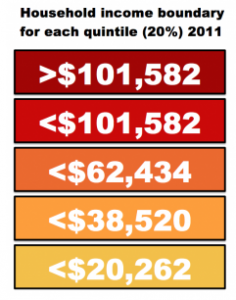 US? What is the ideal distribution of wealth? What is it in reality? This is always an active and fascinating way to begin any section on inequality/stratification in the classroom. This resource, a 6:23 minute video, visually demonstrates the stratification of wealth and answers those questions. (The short answers are a lot, somewhat fair, and way more than you think!)
US? What is the ideal distribution of wealth? What is it in reality? This is always an active and fascinating way to begin any section on inequality/stratification in the classroom. This resource, a 6:23 minute video, visually demonstrates the stratification of wealth and answers those questions. (The short answers are a lot, somewhat fair, and way more than you think!)
US INCOME INEQUALITY: AN INTERACTIVE WEBSITE In today’s complex world students often have a hard time placing themselves in the broader social context, especially in relation to other’s income – something we rarely talk about and is generally considered a private matter in the US. Because of this, many students also struggle to talk about income inequality on a personal level. On top of that, a historical perspective beyond, well…say last week can be difficult for undergraduates to maintain.
. . .
CULTURE
CULTURAL SYMBOLS: Teaching the Confederate flag Cultural symbols and the meanings applied to them are not fixed in time. Within sociology, there is no single agreed upon definition of culture and its processes, but most definitions include a reference to culture being dynamic – that is not static. In my Introduction to Sociology class, I have settled on the following definition for students: Culture is dynamic, shared patterns of socially transmitted, norms, values, beliefs, and symbols. I usually then spend time digging deeply into each of the elements that make up that definition answering such questions as: We use the term “norms” often but what are they? What is the difference between a value and a belief?
. . .
PEDAGOGY
Teaching race and affirmative action: a paper assignment. Here you will find the details of a paper assignment that I use for teaching students about inequality and racial disparity in educational access and achievement.
. . .
See the key words in the right hand column to search all posts for more sociology teaching tools.
Teach well, it matters.

 IN SOCIOLOGY COURSES IS VITAL and should arguably include a focus on CLIMATE JUSTICE. Teaching students about climate change should not be limited to courses in the natural sciences for many reasons.
IN SOCIOLOGY COURSES IS VITAL and should arguably include a focus on CLIMATE JUSTICE. Teaching students about climate change should not be limited to courses in the natural sciences for many reasons. GLOBALIZATION OF COMMODITY CHAINS: WHERE DID MY T-SHIRT COME FROM? The globalization of commodity chains is something that students have a general idea about, but I find it challenging to remove the abstract nature of the convoluted path that materials take before they end up in a consumer’s hands. Sure, “everything is made in China” blah blah blah, but the story of the global economy is MUCH more complex and filled with people occupying different social contexts. Planet Money has come to the rescue with an amazing new story tracing every step of something as simple as a t-shirt.
GLOBALIZATION OF COMMODITY CHAINS: WHERE DID MY T-SHIRT COME FROM? The globalization of commodity chains is something that students have a general idea about, but I find it challenging to remove the abstract nature of the convoluted path that materials take before they end up in a consumer’s hands. Sure, “everything is made in China” blah blah blah, but the story of the global economy is MUCH more complex and filled with people occupying different social contexts. Planet Money has come to the rescue with an amazing new story tracing every step of something as simple as a t-shirt.


 The definitions of “appropriate” food are socially constructed and it is often only through norm violations that we see how much stronger the sociological forces are compared to actual biological limitations of the calories available to us.
The definitions of “appropriate” food are socially constructed and it is often only through norm violations that we see how much stronger the sociological forces are compared to actual biological limitations of the calories available to us.


Comments 1
CATHERINE H EICHHORN — July 20, 2017
Very insightful. Thank you.